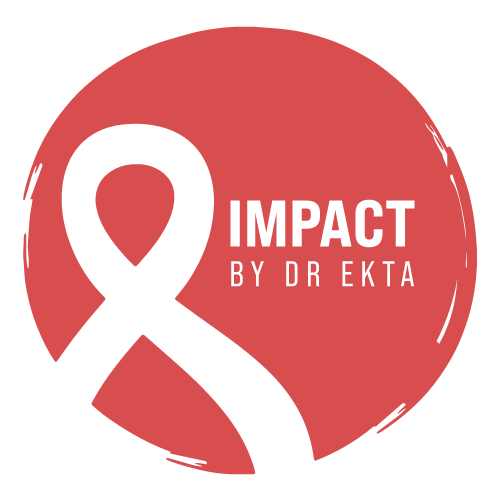Glioblastoma: Understanding the Most Aggressive Brain Cancer
As an oncologist, I’ve witnessed firsthand the devastating impact that various forms of cancer can have on patients and their families. Among the many types of cancer, glioblastoma stands out as one of the most aggressive and challenging to treat. Understanding glioblastoma, from its symptoms and diagnosis to treatment options and prognosis, is crucial for those affected by this formidable disease.
What is Glioblastoma?
Glioblastoma, also known as glioblastoma multiforme (GBM), is a fast-growing, aggressive type of central nervous system tumor that forms from glial cells in the brain. It is classified as a grade IV astrocytoma by the World Health Organization, indicating its high malignancy. Unlike other brain tumors, glioblastomas are notorious for their rapid growth and tendency to infiltrate surrounding brain tissue, making them particularly difficult to treat.
Symptoms of Glioblastoma
The symptoms of glioblastoma can vary widely depending on the tumor’s size, location, and rate of growth. Common symptoms include:
- Headaches: Persistent headaches that are often worse in the morning or during periods of increased intracranial pressure.
- Seizures: New-onset seizures or changes in existing seizure patterns.
- Cognitive or Personality Changes: Memory loss, confusion, or changes in behavior and personality.
- Neurological Deficits: Weakness or numbness in limbs, difficulty with balance, and issues with speech or vision.
- Nausea and Vomiting: Often due to increased pressure within the skull.
These symptoms can be subtle at first and may gradually worsen as the tumor grows.
Causes and Risk Factors
The exact cause of glioblastoma remains largely unknown, but several risk factors have been identified:
- Age: Glioblastoma is more common in older adults, with the average age at diagnosis being around 64.
- Genetics: Certain genetic conditions, such as neurofibromatosis and Li-Fraumeni syndrome, can increase the risk.
- Radiation Exposure: Previous radiation therapy to the head for other medical conditions can elevate the risk.
- Gender: Men are slightly more likely to develop glioblastoma than women.
However, most cases of glioblastoma occur sporadically without a clear predisposing factor.
Diagnosis of Glioblastoma
Diagnosing glioblastoma typically involves a combination of imaging studies and biopsy:
- Magnetic Resonance Imaging (MRI): An MRI scan provides detailed images of the brain, highlighting the tumor’s size, location, and characteristics. Contrast-enhanced MRI is particularly useful for identifying glioblastomas.
- Computed Tomography (CT) Scan: Although less detailed than MRI, a CT scan can also help visualize the tumor and assess any associated swelling or bleeding.
- Biopsy: A definitive diagnosis requires a biopsy, where a sample of the tumor tissue is examined under a microscope to confirm the presence of glioblastoma cells.
Treatment Options for Glioblastoma
Treating glioblastoma is challenging due to its aggressive nature and the complexity of the brain. A multimodal approach is usually employed, combining surgery, radiation therapy, and chemotherapy.
- Surgery
The first line of treatment for glioblastoma is often surgical resection. The goal is to remove as much of the tumor as possible while preserving neurological function. Complete resection is rarely achievable due to the tumor’s infiltrative nature, but maximal safe resection can significantly alleviate symptoms and improve prognosis. - Radiation Therapy
Post-surgery, patients typically undergo radiation therapy to target residual tumor cells. This is usually done in combination with chemotherapy. Standard radiation therapy involves daily treatments over several weeks. - Chemotherapy
The chemotherapy drug most commonly used for glioblastoma is temozolomide (TMZ). It is administered alongside radiation therapy and continued as maintenance therapy afterward. TMZ is favored due to its ability to cross the blood-brain barrier and its relatively mild side effect profile. - Targeted Therapy
Bevacizumab (Avastin) is an example of a targeted therapy used in glioblastoma treatment. It inhibits angiogenesis, the process by which tumors create new blood vessels to sustain their growth. Bevacizumab can help reduce tumor size and alleviate symptoms, though its impact on overall survival is still under investigation. - Experimental Treatments and Clinical Trials
Given the poor prognosis associated with glioblastoma, patients are often encouraged to participate in clinical trials exploring new treatment modalities. These may include novel drug therapies, immunotherapies, and advanced radiation techniques.
Prognosis and Quality of Life
The prognosis for glioblastoma remains bleak, with a median survival time of 12-15 months despite aggressive treatment. The five-year survival rate is less than 10%. Several factors influence prognosis, including patient age, overall health, extent of surgical resection, and genetic markers of the tumor.
While the primary focus is on extending survival, maintaining quality of life is equally important. Palliative care plays a critical role in managing symptoms and providing support to patients and their families throughout the disease course.
Advances in Research
Research into glioblastoma is ongoing, with numerous studies aimed at understanding its biology and developing more effective treatments. Advances in genetic and molecular profiling of tumors have led to the identification of potential therapeutic targets and personalized treatment approaches. Immunotherapy, which harnesses the body’s immune system to fight cancer, is a promising area of research that may offer new hope for glioblastoma patients in the future.
Conclusion
Glioblastoma is one of the most aggressive and challenging forms of brain cancer. Its rapid growth, tendency to infiltrate surrounding tissue, and resistance to standard treatments make it a formidable adversary. However, with ongoing research and advances in medical technology, there is hope for better outcomes in the future. As an oncologist, my commitment is to provide the best possible care, support, and information to those affected by this devastating disease, and to continue striving for breakthroughs that can improve survival and quality of life for glioblastoma patients.

